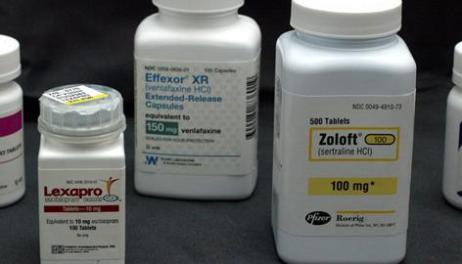A brief history of antidepressants
Antidepressants were accidentally discovered by chance in the 1950’s.(1) While seeking out a medication for schizophrenia, the main diagnosis at the time, drugs were found that could “tweak” the balance of the brains neurotransmitters (even though they didn’t really know how it worked at that time) Patients that weren’t schizophrenic got worse, but other patients, depressed (“neurotic”) had bouts of euphoria.
In 1955, the miracle cure Tofranil (imipramine) was patented, and others started coming up with similar tricyclic(2) antidepressants. Relief came to 60-80% of the patients, but there were terrible side effects and tricyclics can cause heart problems, much moreso than many other psychiatric drugs. In 1987, Prozac, the first SSRI(3) was created, with the same effectiveness and less side effects.
Wellbutrin (Buproprion)
Wellbutrin was created as an atypical antidepressant but they found it helped aid people in quitting smoking, in which it is called Zyban. (When I took it, I got so anxious, I started smoking again after 6 months smoke free!) It is a mild stimulant and is the fourth most prescribed antidepressant in the USA.(4) It is very effective and can be an add-on drug to an antidepressant without worrying about serotonin syndrome, a dangerous syndrome caused when there is too much serotonin in the brain. Often, it is prescribed because SSRI’s can effect sexual functions, and this can help get them back, as well as lose some weight while you’re at it!
Zoloft (Sertaline)
Zoloft is used to treat depression, obsessive compulsive disorder, panic disorder and social anxiety. It is the second highest selling antidepressant in the USA(5) and is approved for children and adults. It works in a similar fashion to tricyclic antidepressants and some say it helps control urges, such as binging and purging. I took it for bulimia, but it made me incredibly violent and agitated, so I was taken off it ASAP.
Off-label Uses
Off label uses of antidepressants are on the rise. One in five doctors prescribing antidepressants are not psychiatrists(6) and aren’t being used for psychiatric purposes. They can help with: fatigue, non-specific pain, smoking cessation, headaches, abnormal sensations and premenstrual tension.
Prozac, Zoloft and Paxil are approved for premenstrual tension. Wellbutrin for smoking cessation and Cymbalta for diabetic neuropathy, chronic musculoskeletal pain and fibromyalgia. Some antidepressants control menopause symptoms as well as hormones do, and if you switch it around, beta-blockers help anxiety. Many medications for schizophrenia were used off-label for bipolar disorder or to augment an antidepressant, and are now on the market, FDA approved for both, such as Abilify, Seroquel and Zyprexa. Many antidepressants can help with pain (migraines, for example) such as Elavil (amitriptyline).
Hell, Viagara is even prescribed to some women to improve their sex lives too!
-
http://www.time.com/time/health/article/0,8599,1952143,00.html
-
Three-ring chemical structure
-
Selective Serotonin Reuptake Inhibitor
-
http://depression.about.com/b/2011/08/09/off-label-antidepressant-use-on-the-rise.htm
-
*Note: Off-label does not mean illegal. It is generally not FDA approved for that specific condition. Also, antidepressants don’t have the abuse potential of many other meds.
